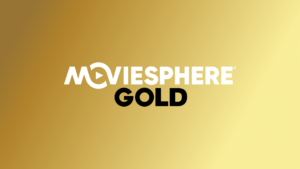MEDIA & BROADCAST TECHNOLOGY: ST ENGINEERING IDIRECT’S CONTRIBUTION AND VISION

Bart De Moor, Senior Manager, Product Marketing ST Engineering iDirect
The media and broadcast industry is undergoing a rapid transformation, driven by technological advancements that enable unprecedented efficiency and quality in content production and distribution. As a new member of IABM, ST Engineering iDirect is keen to contribute to this evolution, offering insights into how satellite technology can address the challenges faced in today’s media landscape.
The modern media and broadcast landscape is marked by the need for high efficiency and versatility. The evolution of broadcast technology has introduced DVB-S2 and DVB-S2X standards, which significantly enhance transmission efficiency. These advancements enable broadcast units to function as single transport stream modulators, demodulators or modems, providing both flexibility and high performance.
Satellite news gathering (SNG) and outside broadcasting (OB), for example, have seen transformative changes with the advent of IP-enabled technologies. In an increasingly connected world, broadcasters require the capability to share breaking news and live sports events swiftly across multiple platforms.
The demand for instant access to high-quality video content is higher than ever, necessitating solutions that can handle various video formats and meet modern viewer expectations.
Advances in satellite technology
Hybrid satellite and terrestrial network infrastructures offer comprehensive solutions for the contribution and distribution of content in multiple live and file formats. These integrated networks connect broadcasters and media service providers globally, leading to smarter operations, reduced operational expenditure and a timely response to evolving market needs.
This mix of technologies ensures comprehensive coverage for live events and newsgathering, providing the flexibility and reliability required in today’s fast-paced media environment.
ST Engineering iDirect’s award winning MxDMA MRC return channel technology combines the benefits of MF-TDMA (ideal for bursty traffic and higher contention services) and the spectrum efficiency of SCPC. MxDMA MRC scales in MHz independent of the number of terminals so customers may be served with a single return link for the majority of their use cases, minimizing operational complexity and maximizing statistic multiplexing:
- On-demand variable bandwidth
- Allocation
- Seamless carrier resizing without
- packet loss or additional jitter
- No fragmentation of the space segment
- Support of high bitrates
Meanwhile, the rise of OTT streaming services has significantly impacted the broadcast industry. The demand for high-quality video content continues to grow, placing immense pressure on broadband networks. Back in 2021, our teams, together with DVB members EasyBroadcast, EKT, Broadpeak and Quadrille, developed the first ecosystem that took the DVB-NIP standard and created a working demo and solution that is deployed today in South America. The DVB-NIP standard bridges the gap between broadband and broadcast networks, helping to pave the way for a truly converged media distribution solution. It uses the efficiency of broadcast networks for large-scale content distribution to modern IP devices fully integrating broadcast technologies with those used in broadband networks. The use of mABR (multicast Adaptive Bit Rate) can serve multiple markets and applications with formats like video (live, SVOD) but also files like push VOD and PDFs.
Video and IP distribution and contribution solutions
Our solutions for traditional and converged broadcast infrastructures (ASI) and IP-based workflows cover a whole range of satellite broadcast transmission applications from contribution to exchange and distribution. Both the amount of TV channels and higher quality of those (HD and imminent Ultra HD), create the need to distribute more data over satellite. In many regions of the world, the affordable satellite capacity is not available. Service Providers need platforms that are very efficient and use the most advanced transmission technologies.
Our large installed base in DTH (Direct-To-Home) proves that end-users and professional users benefit from its efficient technologies and mature product range. And our new MCX8000 multi-carrier satellite gateway is our latest award-winning product, providing a three-in-one future-proof solution with video and IP capabilities.

With the rising demand of OTT content, service providers are looking for new ways to distribute IP content with a bigger geographical reach, to offload their networks and connect underserved regions. Satellite can play a big role in this. The SKYflow ecosystem I mentioned earlier is a world’s first and is currently deployed in Peru where it provides free-to-air channels to residents in the country. Its diverse landscape is home to 34.5 million people, with a significant number of them living in poverty and lacking internet access. The digital divide was exacerbated by the COVID pandemic, but had made the challenges the country was already experiencing much more difficult – lacking access to vital telemedicine services and e-learning materials.
 Satellite can play a crucial role in helping to deliver connectivity for a range of landscapes, and the provision of the SKYflow ecosystem has enabled millions more across Peru to access those all-important services.
Satellite can play a crucial role in helping to deliver connectivity for a range of landscapes, and the provision of the SKYflow ecosystem has enabled millions more across Peru to access those all-important services.
The latest shift in the industry involves blending all available IP networks, ensuring reliable connections by switching to satellite networks when terrestrial networks are insufficient or are not available.
This approach offers a robust solution for delivering high-quality video, regardless of location. Our offering answers broadcasters’ growing desire for greater performance, reliability and efficiency, as well as delivering a multi-service platform that is highly flexible and able to provide a myriad of applications used in the field today – going above and beyond what terrestrial networks can achieve.
Satellite tech: Broadcast evolution’s backbone
As the broadcast industry continues to evolve, the role of satellite technology remains crucial. By addressing current challenges and anticipating future needs, satellite solutions ensure that high-quality video content is accessible to audiences around the world.
ST Engineering iDirect is committed to contributing to this by demonstrating the enduring value of satellite technology and providing a trusted, reliable and effective approach to global connectivity.









